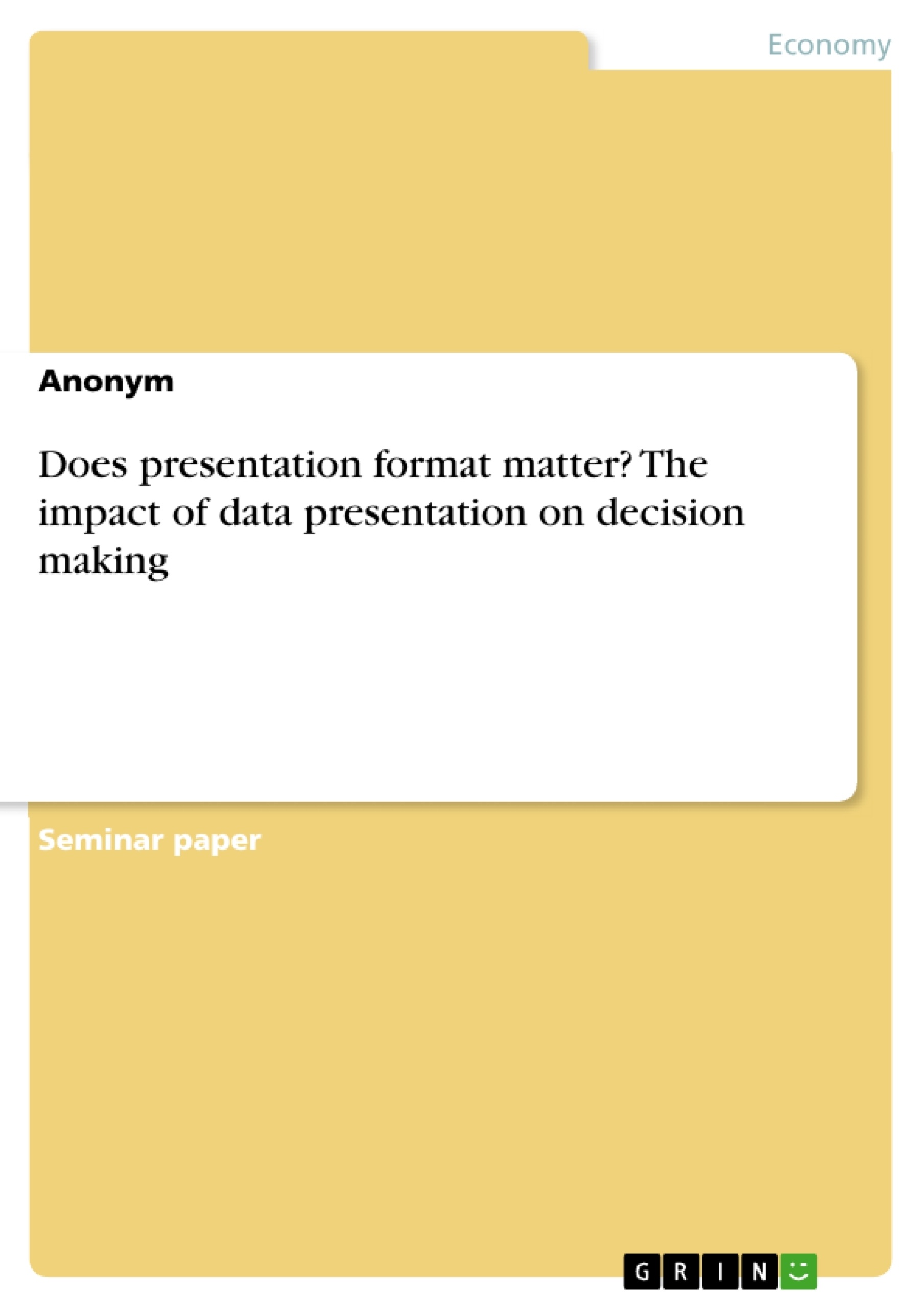Decisions are made based on the information available to the decision maker. For companies the decisions of potential and existing investors matter most. Hence, businesses aim at presenting themselves to their stakeholders in the best way possible. This can be done through all channels of communication that are controlled by the company. Big entities hire specialised employees for departments such as communication or investor relations.
Therefore, this paper aims at answering the question ‘which form of data presentation is most effective for communicating information to investors?’ and ‘which aspects have to be kept in mind when visualising data?’. Hereby, different presentation formats will be compared in terms of their usefulness for decision making. Furthermore, it will be discussed how different types of data have to be visualised. In order to understand why and how data can be manipulated, principles of correct visualisation will be analysed. The research is done by reviewing topic-related literature.
Inhaltsverzeichnis (Table of Contents)
- Introduction
- Research strategy
- Specification of the topic
- Literature Review
- Limitations of this paper
- Reporting design
- Visualisation
- Different forms of data presentation
- Data visualisation through diagrams
- Common diagram forms
- Potential ways of emphasising data
- Correct visualisation
- Critical appraisal
- Conclusion and outlook
Zielsetzung und Themenschwerpunkte (Objectives and Key Themes)
This paper aims to investigate the impact of data presentation format on decision making, specifically focusing on the communication of information to investors. The research explores the effectiveness of various presentation formats for decision-making purposes and analyzes the principles of correct data visualization to understand how data can be manipulated.- The impact of data presentation on decision making
- Effective communication of information to investors
- Comparison of different presentation formats for decision-making
- Principles of correct data visualization
- Potential for data manipulation
Zusammenfassung der Kapitel (Chapter Summaries)
- Introduction: This chapter introduces the research question and highlights the importance of effective data presentation in attracting and retaining investors. It emphasizes the growing pressure on companies to increase market value and the challenges associated with presenting information accurately and effectively.
- Research strategy: This chapter outlines the research approach, specifying the topic of investigation, reviewing relevant literature, and acknowledging the limitations of the paper.
- Reporting design: This chapter delves into the design of data visualization, examining different forms of presentation, including the use of diagrams and their potential for emphasizing data. It also explores the principles of correct visualization and critical appraisal of data presentation methods.
Schlüsselwörter (Keywords)
The main keywords and focus topics of this paper include data presentation, decision making, investor relations, data visualization, communication, information, presentation formats, diagrams, manipulation, and critical appraisal. This research investigates the impact of different data presentation formats on investor decision-making, exploring the effectiveness of various methods and analyzing the principles of correct visualization to understand how data can be manipulated.- Quote paper
- Anonym (Author), 2014, Does presentation format matter? The impact of data presentation on decision making, Munich, GRIN Verlag, https://www.grin.com/document/298464



